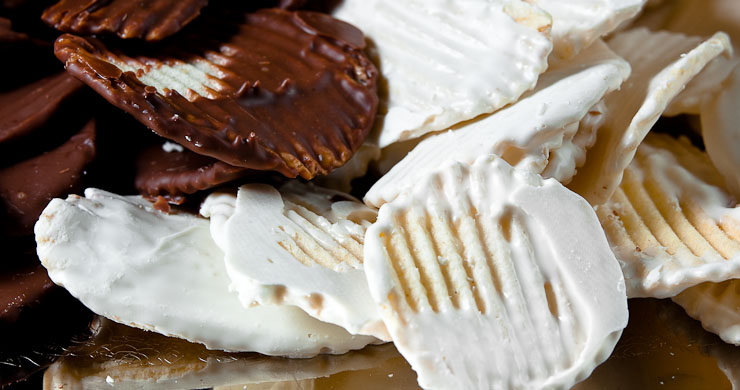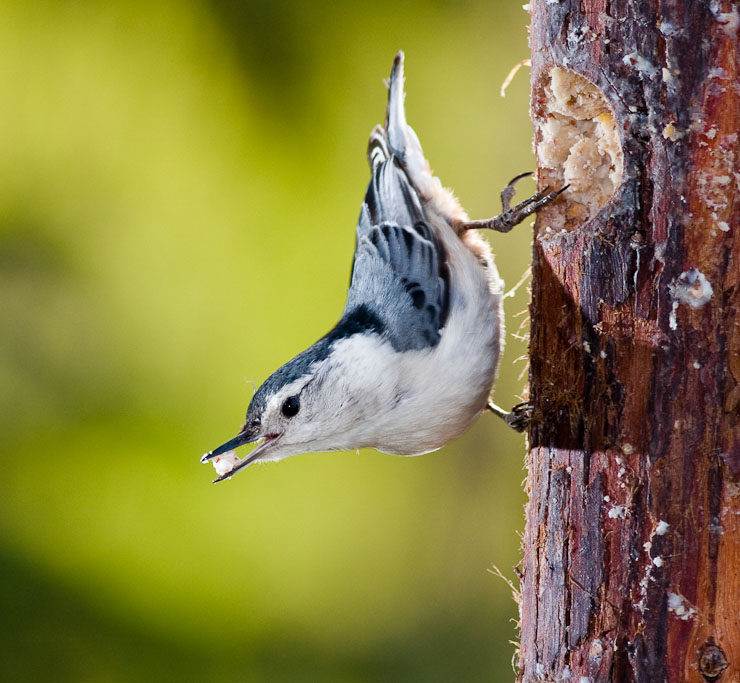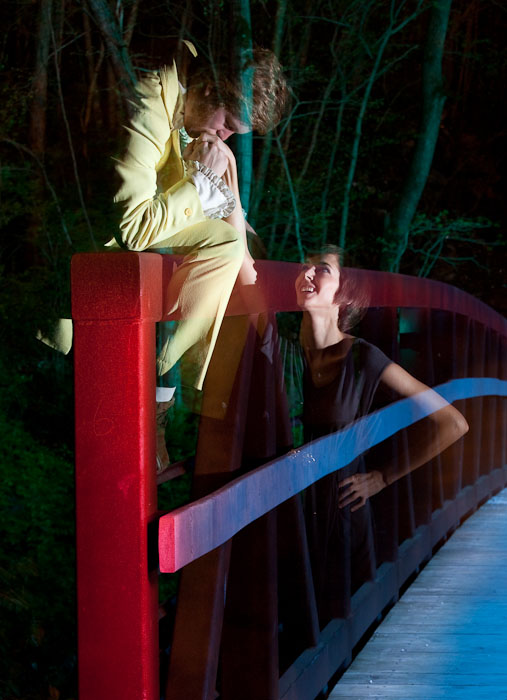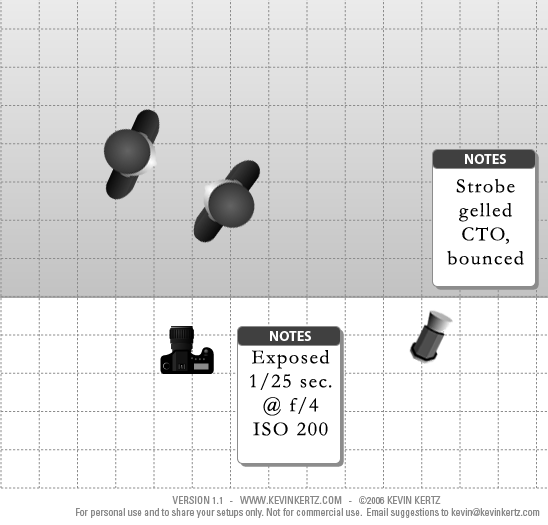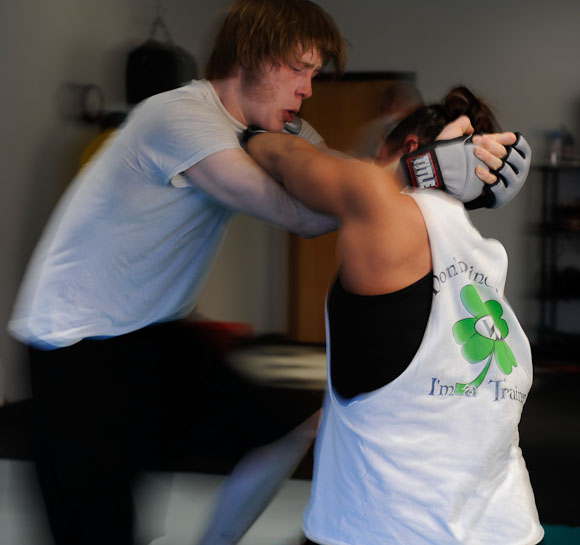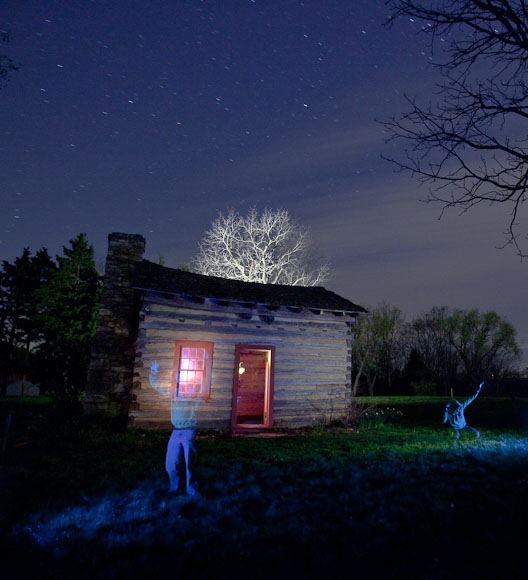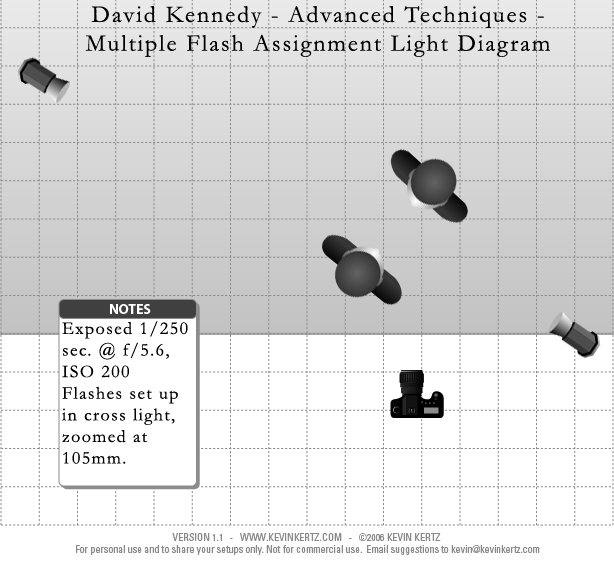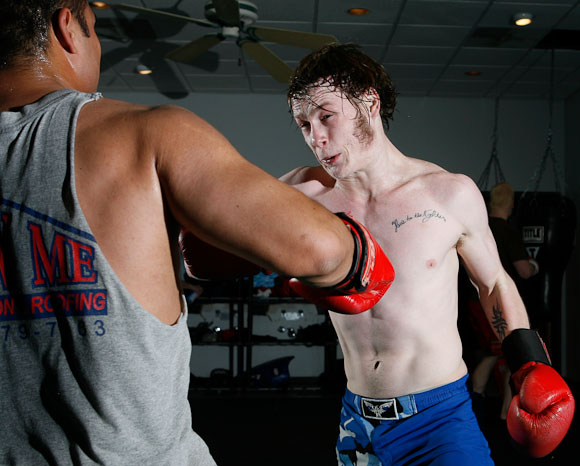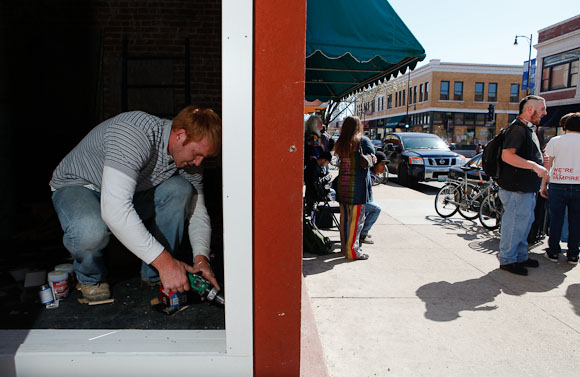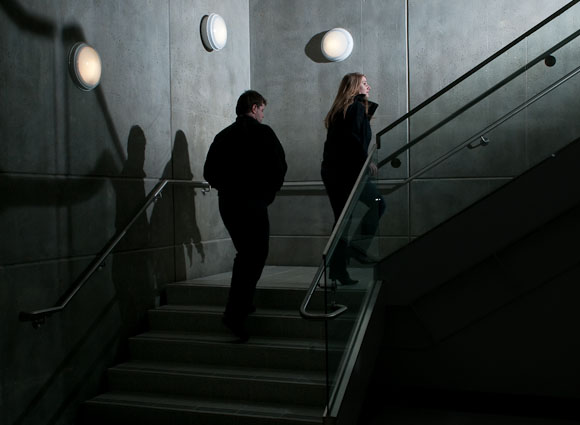I really haven’t photographed food before–not in any serious fashion–so when I found myself confronted with a silver platter of chocolate-covered potato chips yesterday at the Candy Factory in Columbia, Mo., I was thrown for a loop.
There was no chance I would use existing light: it was a mix of daylight and tungsten, and exposing for the chips coated in which chocolate would have meant underexposing the others significantly. So I set up two lights bouncing into umbrellas at either end of the silver tray. It took me a while for all that I learned about photographing metal–and look how little of it wound up in the final frame!–and its family of angles to come back to me (about 50 chimped frames) but once the reflections were under control, it just became a matter of the ratio between the key and the fill lights.
Ultimately, the SB-80-DX, on camera left, was fired at a third stop under 1/2 power, and the 550EX on camera right was fired at 1/16 power. Could I have balanced those a bit? Probably. The shadows cast by the milk chocolate potato chips bother me a bit. I’ll file that in the “next time” category.
